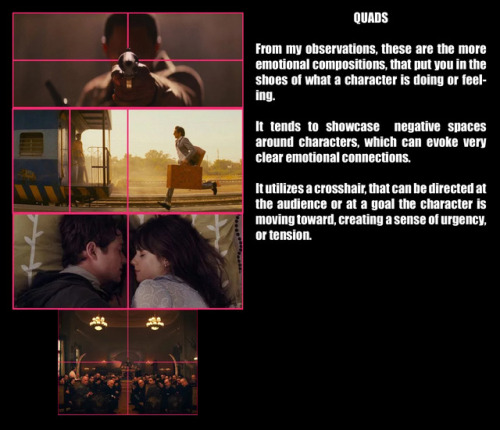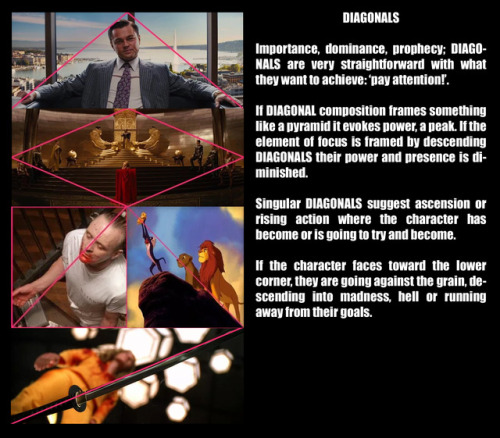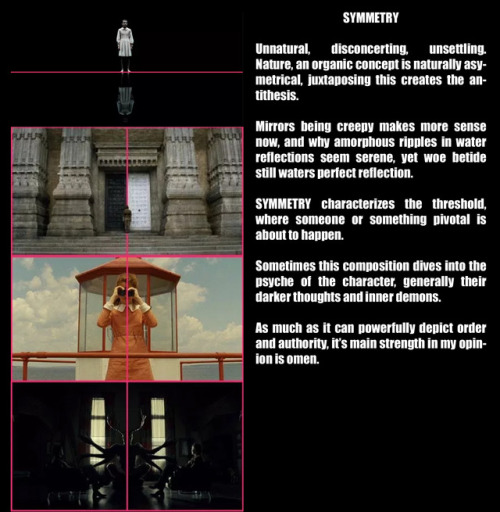Your Character’s Personality
Your Character’s Personality
Personality is the most important thing about your character.
So, whenever I see character sheets, most people just put a little paragraph for that section. If you’re struggling and don’t know what your character should say or do, what decisions they should make, I guarantee you that this is the problem.
You know your character’s name, age, race, sexuality, height, weight, eye color, hair color, their parents’ and siblings’ names. But these are not the things that truly matter about them.
Traits:
pick traits that don’t necessarily go together. For example, someone who is controlling, aggressive and vain can also be generous, sensitive and soft-spoken. Characters need to have at least one flaw that really impacts how they interact with others. Positive traits can work as flaws, too. It is advised that you pick at least ten traits
people are complex, full of contradictions, and please forgive me if this makes anyone uncomfortable, but even bullies can be “nice” people. Anyone can be a “bad” person, even someone who is polite, kind, helpful or timid can also be narcissistic, annoying, inconsiderate and a liar. People are not just “evil” or “good”
Beliefs:
ideas or thoughts that your character has or thinks about the world, society, others or themselves, even without proof or evidence, or which may or may not be true. Beliefs can contradict their values, motives, self-image, etc. For example, the belief that they are an awesome and responsible person when their traits are lazy, irresponsible and shallow. Their self-image and any beliefs they have about themselves may or may not be similar/the same. They might have a poor self-image, but still believe they’re better than everybody else
Values:
what your character thinks is important. Usually influenced by beliefs, their self-image, their history, etc. Some values may contradict their beliefs, wants, traits, or even other values. For example, your character may value being respect, but one of their traits is disrespectful. It is advised you list at least two values, and know which one they value more. For example, your character values justice and family. Their sister tells them she just stole $200 from her teacher’s wallet. Do they tell on her, or do they let her keep the money: justice, or family? Either way, your character probably has some negative feelings, guilt, anger, etc., over betraying their other value
Motives:
what your character wants. It can be abstract or something tangible. For example, wanting to be adored or wanting that job to pay for their father’s medication. Motives can contradict their beliefs, traits, values, behavior, or even other motives. For example, your character may want to be a good person, but their traits are selfish, manipulative, and narcissistic. Motives can be long term or short term. Everyone has wants, whether they realize it or not. You can write “they don’t know what they want,” but you should know. It is advised that you list at least one abstract want
Recurring Feelings:
feelings that they have throughout most of their life. If you put them down as a trait, it is likely they are also recurring feelings. For example, depressed, lonely, happy, etc.
Self Image:
what the character thinks of themselves: their self-esteem. Some character are proud of themselves, others are ashamed of themselves, etc. They may think they are not good enough, or think they are the smartest person in the world. Their self-image can contradict their beliefs, traits, values, behavior, motives, etc. For example, if their self-image is poor, they can still be a cheerful or optimistic person. If they have a positive self-image, they can still be a depressed or negative person. How they picture themselves may or may not be true: maybe they think they’re a horrible person, when they are, in fact, very considerate, helpful, kind, generous, patient, etc. They still have flaws, but flaws don’t necessarily make you a terrible person
Behavior:
how the character’s traits, values, beliefs, self-image, etc., are outwardly displayed: how they act. For example, two characters may have the trait “angry” but they all probably express it differently. One character may be quiet and want to be left alone when they are angry, the other could become verbally aggressive. If your character is a liar, do they pause before lying, or do they suddenly speak very carefully when they normally don’t? Someone who is inconsiderate may have issues with boundaries or eat the last piece of pizza in the fridge when they knew it wasn’t theirs. Behavior is extremely important and it is advised you think long and hard about your character’s actions and what exactly it shows about them
Demeanor:
their general mood and disposition. Maybe they’re usually quiet, cheerful, moody, or irritable, etc.
Posture:
a secondary part of your character’s personality: not as important as everything else. It is advised you fill this out after. Posture is how the character carries themselves. For example, perhaps they swing their arms and keep their shoulders back while they walk, which seems to be the posture of a confident person, so when they sit, their legs are probably open. Another character may slump and have their arms folded when they’re sitting, and when they’re walking, perhaps they drag their feet and look at the ground
Speech Pattern:
a secondary part of your character’s personality: not as important as everything else. It is advised you fill this out after. Speech patterns can be words that your character uses frequently, if they speak clearly, what sort of grammar they use, if they have a wide vocabulary, a small vocabulary, if it’s sophisticated, crude, stammering, repeating themselves, etc. I personally don’t have a very wide vocabulary, if you could tell
Hobbies:
a secondary part of your character’s personality: not as important as everything else. It is advised you fill this out after. Hobbies can include things like drawing, writing, playing an instrument, collecting rocks, collecting tea cups, etc.
Quirks:
a secondary part of your character’s personality, not as important as everything else. It is advised you fill this out after. Quirks are behaviors that are unique to your character. For example, I personally always put my socks on inside out and check the ceiling for spiders a few times a day
Likes:
a secondary part of your character’s personality, not as important as everything else. It is advised you fill this out after. Likes and dislikes are usually connected to the rest of their personality, but not necessarily. For example, if your character likes to do other people’s homework, maybe it’s because they want to be appreciated
Dislikes:
a secondary part of your character’s personality, not as important as everything else. It is advised you fill this out after. Likes and dislikes can also contradict the rest of their personality. For example, maybe one of your character’s traits is dishonest, but they dislike liars
History:
your character’s past that has key events that influence and shape their beliefs, values, behavior, wants, self-image, etc. Events written down should imply or explain why they are the way they are. For example, if your character is distrustful, maybe they were lied to a lot by their parents when they were a child. Maybe they were in a relationship for twenty years and found out their partner was cheating on them the whole time. If their motive/want is to have positive attention, maybe their parents just didn’t praise them enough and focused too much on the negative
On Mental and Physical Disabilities or Illnesses
if your character experienced a trauma, it needs to have an affect on your character. Maybe they became more angry or impatient or critical of others. Maybe their beliefs on people changed to become “even bullies can be ‘nice’ people: anyone can be a ‘bad’ person”
people are not their illness or disability: it should not be their defining trait. I have health anxiety, but I’m still idealistic, lazy, considerate, impatient and occasionally spiteful; I still want to become an author; I still believe that people are generally good; I still value doing what make me feel comfortable; I still have a positive self-image; I’m still a person. You should fill out your character’s personality at least half-way before you even touch on the possibility of your character having a disability or illness
Generally everything about your character should connect, but hey, even twins that grew up in the same exact household have different personalities; they value different things, have different beliefs. Maybe one of them watched a movie that had a huge impact on them.
Not everything needs to be explained. Someone can be picky or fussy ever since they were little for no reason at all. Someone can be a negative person even if they grew up in a happy home.
I believe this is a thought out layout for making well-rounded OCs, antagonists and protagonists, whether they’re being created for a roleplay or for a book. This layout is also helpful for studying Canon Characters if you’re looking to accurately roleplay as them or write them in fanfiction or whatever.
I’m really excited to post this, so hopefully I didn’t miss anything important…
If you have any questions, feel free to send a message.
- Chick
More Posts from Kiminitodokestuff and Others
I started animation at the age of 11. And I finished my first film when I was 14.
Brad Bird (Director/Writer of The Iron Giant, The Incredibles, and Ratatouille) from his interview with Johannes Wolters. (via animationdesk)
Sounds nice but it's not really encouraging for me. I'm 17, I want to be an animation director one day and I only started drawing this year.





Wandered into an article with 140 iconic cinematic shots, the comments complained there was no explanation to their composition. Decided to give it a run down and keep it to myself.
The compositions are mostly self explanatory but I wanted to see what patterns I could find. That’s just how you learn stuffs.

Change The Toon

There is a stigma that limits 2D/hand-drawn animation to just kids’ programs and comedy. The stereotype is so commonly upheld that animation is often considered a genre or category, rather than a medium of filmmaking that is capable of producing works in any genre. There doesn’t seem to be a spot at the table for sophisticated and mature animated works within our industry at large.
Whether you agree with it or not, the fact remains animation is the bastard child of film. The industry treats animation as that weird kid in school that no one wants to play with because they don’t know which camp they belong to. Is animation the class clown, the stoner kid in the back of the room or some weird otaku? How about none of the above. It’s the super genius lone wolf who’s worldly and intelligent. Deep and poetic.
I believe that animation can be sophisticated, elegant, intelligent, and mature – that its dramatic value and philosophical impact can rival the best live action pieces. In a sense, I want to help hand-drawn animation grow up – to show that it can have a spot at the table. It can be more than just slapstick.
If you’re tired of that same old song and dance the industry makes animation play to… Change the toon.
If you agree, share this message.
If you want do help us make that change, check out what we’re doing here: bit.ly/beambitious

Are you stuck figuring out a personality for a bio? Or are you dying to join an OC RP, but find yourself unable to create a character? Well, this is the guide for you!
-
 asterism-codex liked this · 3 days ago
asterism-codex liked this · 3 days ago -
 poorly-adapted-literary-freak liked this · 4 days ago
poorly-adapted-literary-freak liked this · 4 days ago -
 galaxyminusgravity liked this · 6 days ago
galaxyminusgravity liked this · 6 days ago -
 kpopcraxy liked this · 1 week ago
kpopcraxy liked this · 1 week ago -
 soundboxxx28 liked this · 1 week ago
soundboxxx28 liked this · 1 week ago -
 veatheirken liked this · 1 week ago
veatheirken liked this · 1 week ago -
 crackri0t liked this · 1 week ago
crackri0t liked this · 1 week ago -
 crackri0t reblogged this · 1 week ago
crackri0t reblogged this · 1 week ago -
 silverllynn liked this · 1 week ago
silverllynn liked this · 1 week ago -
 casiodana-aria-varta liked this · 2 weeks ago
casiodana-aria-varta liked this · 2 weeks ago -
 ontdekking liked this · 2 weeks ago
ontdekking liked this · 2 weeks ago -
 greenlillies liked this · 2 weeks ago
greenlillies liked this · 2 weeks ago -
 mygarbagedumpofablog reblogged this · 2 weeks ago
mygarbagedumpofablog reblogged this · 2 weeks ago -
 midnightgardenn reblogged this · 2 weeks ago
midnightgardenn reblogged this · 2 weeks ago -
 abnomi liked this · 2 weeks ago
abnomi liked this · 2 weeks ago -
 craftytrashnightmare liked this · 3 weeks ago
craftytrashnightmare liked this · 3 weeks ago -
 anonymocha liked this · 3 weeks ago
anonymocha liked this · 3 weeks ago -
 holynightmarefuel liked this · 3 weeks ago
holynightmarefuel liked this · 3 weeks ago -
 090909yh liked this · 3 weeks ago
090909yh liked this · 3 weeks ago -
 crashed-n-confused liked this · 3 weeks ago
crashed-n-confused liked this · 3 weeks ago -
 sketchykc liked this · 3 weeks ago
sketchykc liked this · 3 weeks ago -
 somewildthingsblog liked this · 4 weeks ago
somewildthingsblog liked this · 4 weeks ago -
 spudat0 liked this · 1 month ago
spudat0 liked this · 1 month ago -
 rose-bookblood reblogged this · 1 month ago
rose-bookblood reblogged this · 1 month ago -
 guest-conductor liked this · 1 month ago
guest-conductor liked this · 1 month ago -
 solarwitchgal reblogged this · 1 month ago
solarwitchgal reblogged this · 1 month ago -
 shlocklava-shoe liked this · 1 month ago
shlocklava-shoe liked this · 1 month ago -
 loganismybodyguard liked this · 1 month ago
loganismybodyguard liked this · 1 month ago -
 mis-fortuneee liked this · 1 month ago
mis-fortuneee liked this · 1 month ago -
 thegroovygroupie liked this · 1 month ago
thegroovygroupie liked this · 1 month ago -
 nerd-warning liked this · 1 month ago
nerd-warning liked this · 1 month ago -
 stormeko liked this · 1 month ago
stormeko liked this · 1 month ago -
 shi-zun liked this · 1 month ago
shi-zun liked this · 1 month ago -
 dearest-laito liked this · 1 month ago
dearest-laito liked this · 1 month ago -
 arsyeol reblogged this · 1 month ago
arsyeol reblogged this · 1 month ago -
 arsyeol liked this · 1 month ago
arsyeol liked this · 1 month ago -
 writeshine reblogged this · 1 month ago
writeshine reblogged this · 1 month ago -
 miguleoharraismywife liked this · 1 month ago
miguleoharraismywife liked this · 1 month ago -
 goawayimsleepin liked this · 1 month ago
goawayimsleepin liked this · 1 month ago -
 bun-i liked this · 1 month ago
bun-i liked this · 1 month ago -
 amethystcatbat liked this · 1 month ago
amethystcatbat liked this · 1 month ago -
 seaslugsss liked this · 1 month ago
seaslugsss liked this · 1 month ago -
 unprofessionalgalacticbaseballer liked this · 1 month ago
unprofessionalgalacticbaseballer liked this · 1 month ago -
 sillymoonpainter liked this · 1 month ago
sillymoonpainter liked this · 1 month ago -
 shigacajun reblogged this · 1 month ago
shigacajun reblogged this · 1 month ago -
 blossompoet liked this · 1 month ago
blossompoet liked this · 1 month ago -
 carrioncurrse liked this · 1 month ago
carrioncurrse liked this · 1 month ago -
 crocochill liked this · 1 month ago
crocochill liked this · 1 month ago





